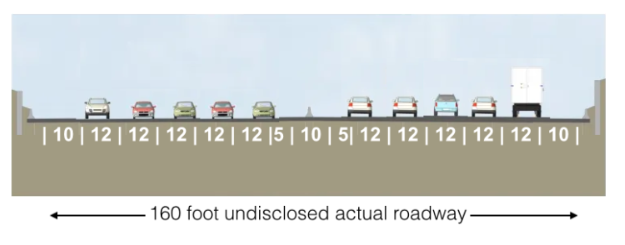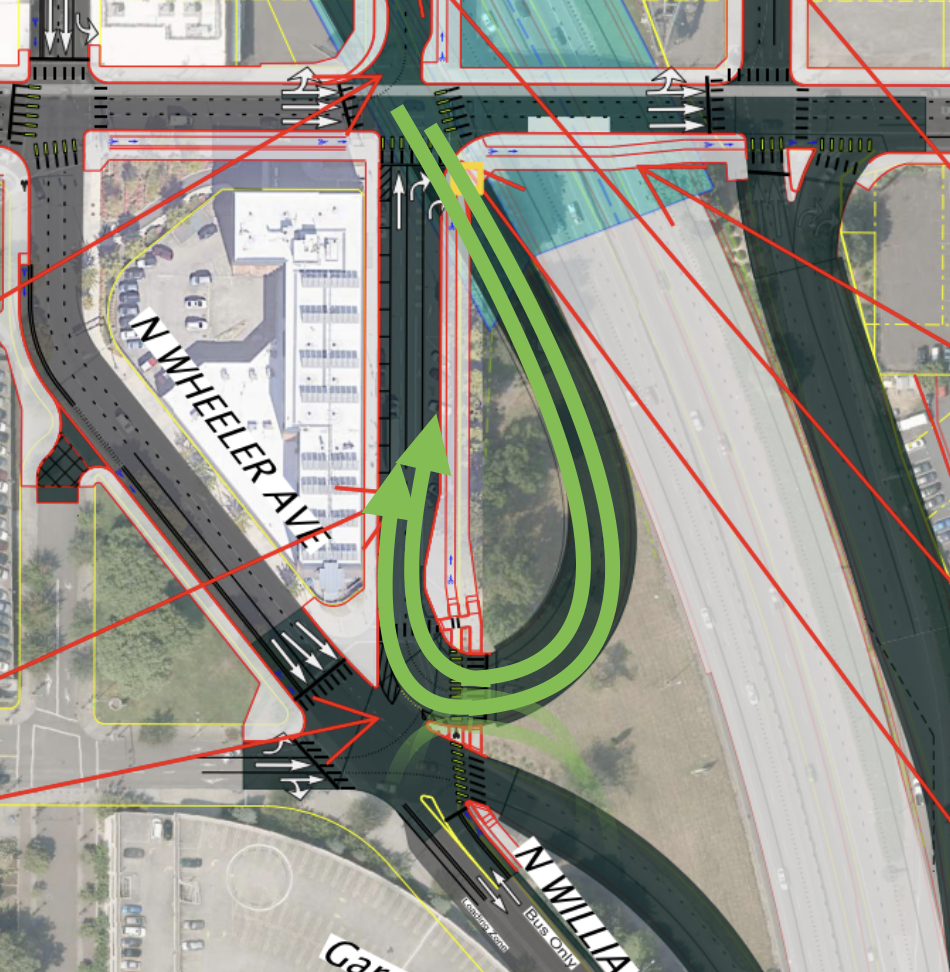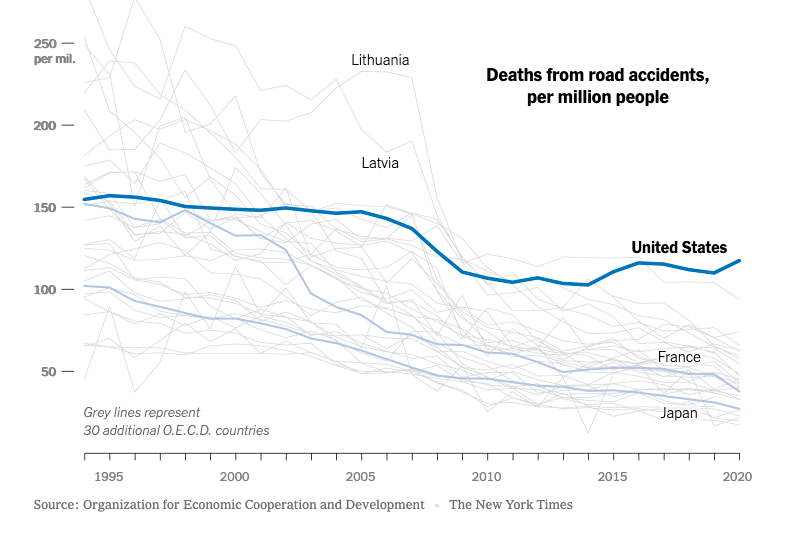Editor’s Note: Public Comment on the I-5 Rose Quarter Freeway Project
In the next month, the public will be asked to weigh in with its comments on the proposed I-5 Rose Quarter Freeway Widening project. If you’re interested, you can make your voice heard. For more information on how to comment, we urge you to visit No More Freeways’ website. For the rest of this month, City Observatory will be presenting a synopsis of its independent research on the project.
What City Observatory did this week
Why won’t ODOT tell us how wide their freeway is? After more than three years of public debate, ODOT still won’t tell anyone how wide a freeway they’re planning to build at the Rose Quarter. ODOT’s plans appear to provide for a 160-foot wide roadway, wide enough to accommodate a ten lane freeway, not just two additional “auxiliary” lanes. In reality, ODOT is planning a 10 lane freeway.
ODOT is trying to avoid NEPA, by building a wide roadway now, and then re-striping it for more lanes after it is built. The agency has utterly failed to examine the traffic, pollution and safety effects of the ten-lane roadway they’ll actually build.
Exposing the black box calculations that highway builders use to sell their projects. State DOT officials have crafted an Supplemental Environmental Assessment that conceals more than it reveals. The Rose Quarter traffic report contains no data on “average daily traffic” the most common measure of vehicle travel. Three and a half years later and ODOT’s Rose Quarter’s Traffic Modeling is still a closely guarded secret. The new SEA makes no changes to the regional traffic modeling done for the 2019 EA, which was done 7 years ago in 2015. The report misleadingly cites “volume to capacity ratios” without revealing either volumes or capacities. ODOT has violated its own standards for documenting traffic projections, and violated national standards for maintaining integrity of traffic projections.
Oregon Department of Transportation admits its re-design of the I-5 Rose Quarter project will create a dangerous, substandard freeway exit and increase crashes. Earlier, City Observatory pointed out that a new design of Portland’s $1.45 billion I-5 Rose Quarter freeway widening will construct a dangerous hairpin turn for vehicles exiting the I-5 freeway into Northeast Portland.
The project’s own Supplemental Environmental Assessment confirms our analysis. This newly revealed ODOT report shows the redesign of the I-5 Rose Quarter project will:
- creates a dangerous hairpin turn on the I-5 Southbound off-ramp
- increase crashes 13 percent
- violate the agency’s own highway design standards
- result in trucks turning into adjacent lanes and forcing cars onto highway shoulders
- necessitate a 1,000 foot long “storage area” to handle cars exiting the freeway
- require even wider, more expensive freeway covers that will be less buildable
Must read
USA, USA! Number one . . . for traffic deaths. A terrific data-driven story from the New York Times’ Emily Badger and Alicia Parlapieano points out an unfortunate area of American exceptionalism: traffic deaths. The US now has a higher death rate from traffic crashes that almost every advanced economy. And while the rest of the world has been steadily reducing crash deaths, they’ve been going up, especially for vulnerable road users. The key findings are spelled out in a compelling chart showing the number of traffic deaths per capita for major countries.
There have been some counter arguments that the US death rate isn’t so high if you compute it on a “per mile traveled” basis, rather than per capita, but that misses two key points. First, America’s excessive auto dependence is what forces Americans to drive long distances; and every mile traveled is an additional risk, both to the person traveling and to other road users. And second, even after adjusting for miles traveled, the trend is still in the wrong direction: the US is getting significantly less safe that other industrialized nations, something we’ve pointed out for years at City Observatory.
Widening that freeway won’t lessen congestion, it will increase pollution. Austin’s LMT Online responds to the plaintive cries that I-35 is congested with exactly the right tone: so what? Highway apologists at the Texas Transportation Institute call the highway one of the busiest in Texas, but time and again, experience has shown that widening roadways actually doesn’t reduce congestion, it just prompts more people to drive further and fuels more sprawl and car dependence. TXDOT is proposing a $5 billion widening of I-35 through Austin. The city’s residents will get a chance to weigh in on that decision when they choose a new Mayor soon: one candidate favors the freeway, his opponent is against. We’ll watch to see if Austin is learning, or if it continues to believe that just one more lane will fix things.



